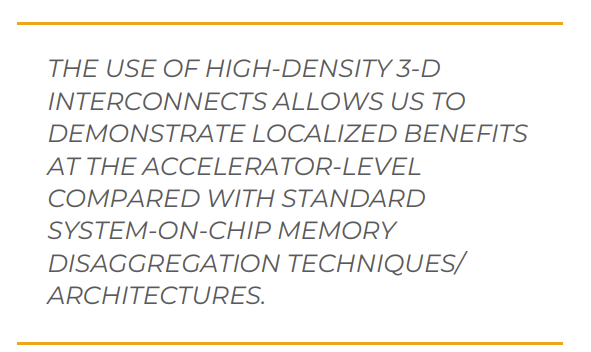Three-Dimensional Stacked Neural Network Accelerator Architectures for AR/VR Applications
PubDate: Nov 2022
Teams: Stanford University,Meta
Writers: Lita Yang, Robert M. Radway, Yu-Hsin Chen, Tony F. Wu, Huichu Liu, Elnaz Ansari, Vikas Chandra, Subhasish Mitra, Edith Beigné
PDF: Three-Dimensional Stacked Neural Network Accelerator Architectures for AR/VR Applications

Abstract
Three-dimensional integration offers architectural and performance benefits for scaling augmented/virtual reality (AR/VR) models on highly resource-constrained edge devices. Two-dimensional off-chip memory interfaces are too prohibitively energy intensive and bandwidth (BW) limited for AR/VR devices. To solve this, we propose using advanced 3-D stacking technology for high-density vertical integration to local memory and compute, increasing memory capacity within the same footprint at iso-BW with improvements in energy and latency. We evaluate 3-D architectures for a prototype AR/VR accelerator to demonstrate up to 3.9x latency reduction and 1.6x lower energy compared to a 2-D configuration within a smaller/ similar footprint. Additionally, we show the feasibility of deploying higher resolution AR/VR models by stacking multiple tiers of memory, providing a pathway to break the footprint constraints of 2-D architectures. The use of high-density 3-D interconnects allows us to demonstrate localized benefits at the accelerator-level compared with standard system-on-chip memory disaggregation techniques/architectures.


